Project Log: Sunday, September 21, 2013
The large freeing ports in the bulwarks on each side of
the boat were one of the design's more notable cosmetic
and functional features. The original material
used to seal the joints between the hull and deck
moldings in these openings had long ago passed the end
of its useful life, and the material had become hard,
dry, and brittle, and begun to fail and crack away over
widespread areas. It was time to address these
areas as part of my overall preparations for painting.
|
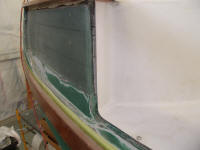
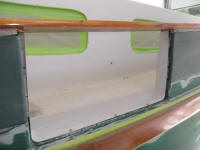
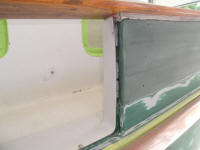
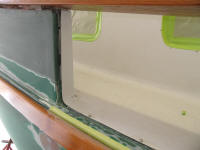
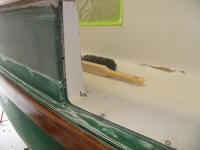 |
Working comfortably from staging I set up outside the
boat, I handled each of the six openings in turn.
To begin, I reamed out the old, failed material from the
vertical seams, some of which were fairly sizeable gaps,
and scraped off the bead of sealant at the base of the
openings, where the deck actually sat on top of the hull
molding. Since the material had long since failed
to successfully bond, removal was easy.
Afterwards, I wire-brushed the openings and seams to the
extend possible, and thoroughly solvent-washed to remove
remaining dirt and residue. |
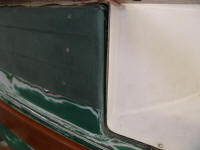
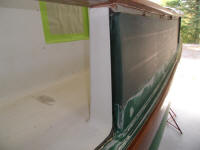
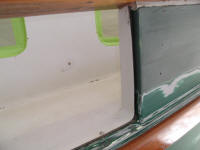
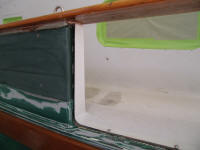
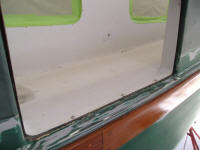
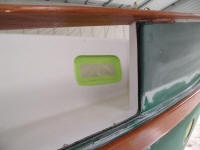
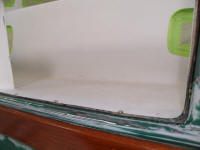
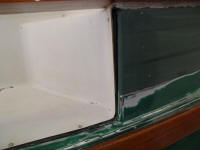
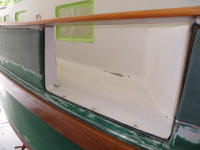
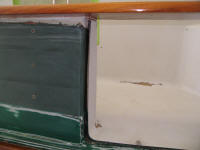 |
To reseal the openings, I chose 4200 polyurethane
adhesive sealant specifically for its strength,
flexibility, and adhesion characteristics, as well as
for its application properties: 4200 is stiffer
than 5200 and stays in place on vertical seams much
better, and cures quickly. I forced the sealant
into the openings between hull and deck moldings,
filling them up with the material before forming a
cosmetic bead over the exterior of the joint for
pleasing appearance and an effective seal. These
areas would later be painted as well as mostly hidden by
the teak bulwark boards on the exterior. |
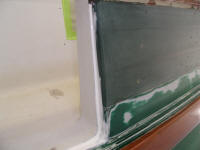

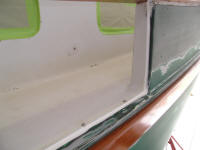


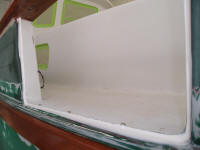

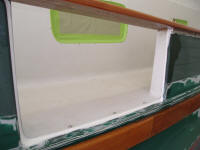

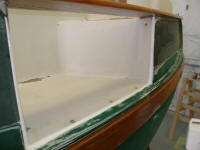
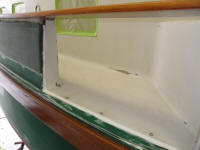 |
While I was in the area, I found this was a good time to
remove masking tape from around the rubrails, which tape
had been in place for several years, since I put a few
coats of varnish on those rails way back in January
2011, and also to clean up some excess sealant
squeezeout from the outside edge of the caprails, which
was now well-cured and rubbery and easy to scrape away. |
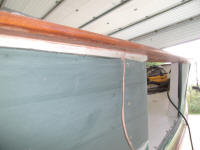 |
While I worked on the two forwardmost freeing ports, I
took the opportunity to mask over the outsides of the
small round deadlights in the forward cabin; I'd masked
them from the inside during an earlier session. |
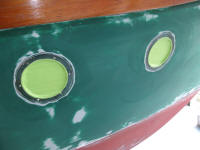
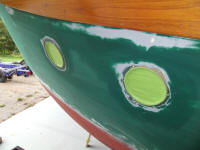 |
Later in the afternoon, I spent some more time masking
on deck as needed. To begin, I wrapped up some
wires and the antenna for the AIS system that I'd
previously installed through the pilothouse roof, and
used some small stuff to tie the taped-up bundles to the
shop ceiling so they didn't rest on the deck. It
was kind of a pain having these wires to work around,
but I'd needed to run them previously so I could keep
moving forward on the jobs I'd been working on in the
boat's interior, mainly the overhead and wiring trim
chases, and ultimately I'd be able to work around the
wires easily enough. |
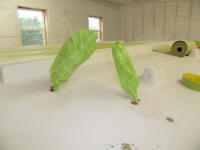
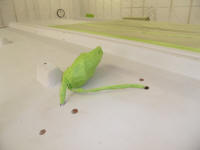
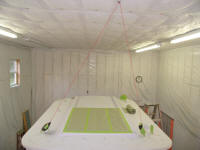 |
Next, I masked over the anchor roller assembly at the
stem, and then taped up the starboard caprail all the
way aft to the cockpit, which brought me to the end of
the day's labors. |

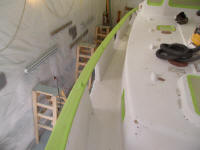
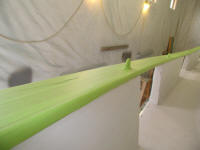


 |
| |
Total Time Today: 4.25 hours
|
<
Previous | Next > |
|
|







































